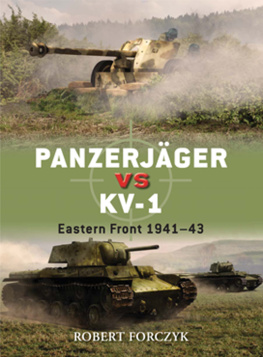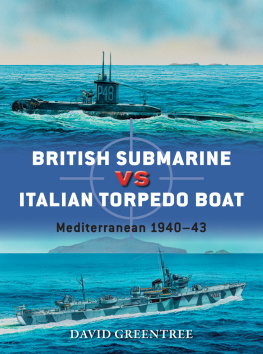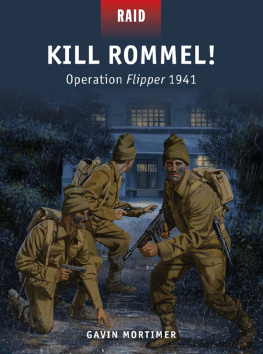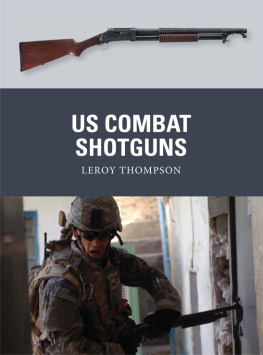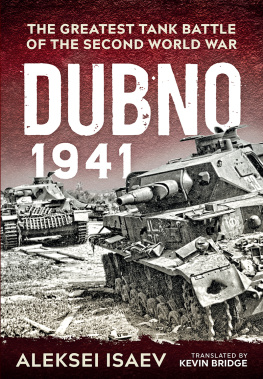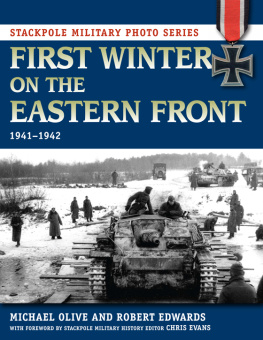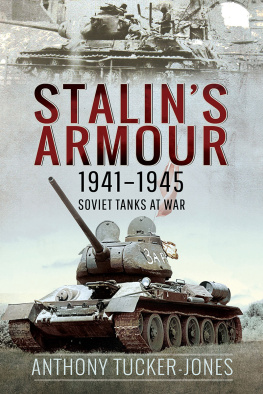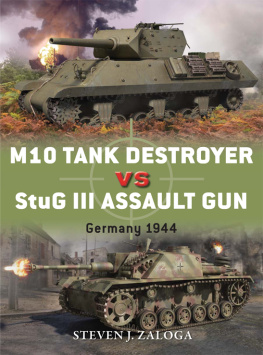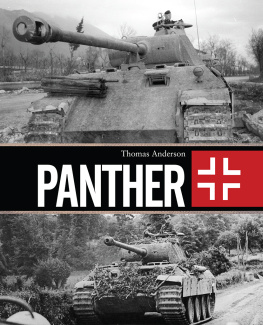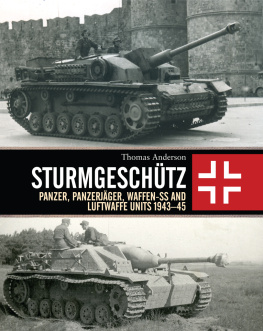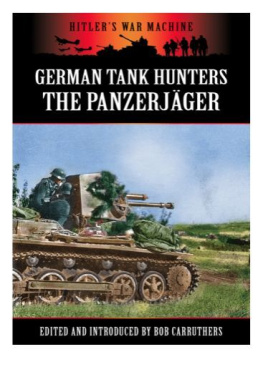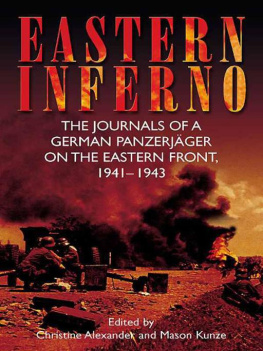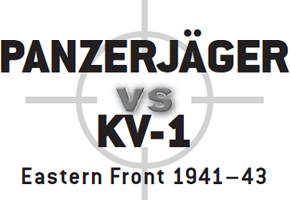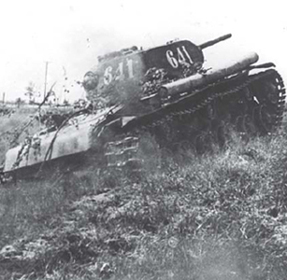ROBERT FORCZYK
CONTENTS
INTRODUCTION
The KV tanks left the enemy literally shocked. They resisted the fire of every type of cannon with which the German tanks were armed.
General Konstantin Rokossovsky
During the closing stages of World War I, the German Army suffered painful defeats at Cambrai, Soissons and Amiens due to the massed use of tanks by Allied forces. The German military leadership was slow to recognize the threat posed by tanks and responded with ad hoc measures that often proved to be too little, too ineffective and too late. Initially, armor-piercing bullets and the Mauser 13mm T-Gewehr antitank rifle were introduced, which had some effect against the slow and lightly armored tanks of 191617. Yet as the Allies introduced heavier tanks in 1918, the deficiencies in German antitank capabilities became ominously apparent. After a variety of expedient solutions, including issuing small quantities of armor-piercing ammunition to division-level 7.7cm field guns, the German Army finally recognized the urgent need to create a lightweight antitank gun. Rheinmetall was chosen and using available components, its engineers created the 3.7cm TaK antitank gun. Under ideal conditions, the Rheinmetall gun could penetrate 15mm of armor at 500m with its armor-piercing rounds just enough to defeat the British Mark V tank. Rheinmetall managed to complete about 600 3.7cm TaK antitank guns before the Armistice, but the German Army had to discard these weapons under the terms of the restrictive Treaty of Versailles. According to the treaty, the post-war German Reichswehr could neither possess nor develop antitank guns, which served to ensure the supremacy of the Anglo-French armies.
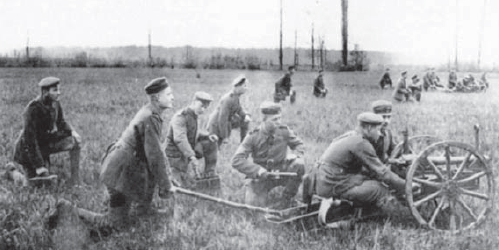
A 3.7cm TaK 36 antitank gun in 1918. Experience in World War I shaped the German preference for low-profile, lightweight antitank guns that were easy to maneuver on the battlefield but difficult to detect. (Author)
After their defeat in World War I, German military leaders studied the lessons of that conflict intensively, as well as developments in military technology, and determined to rebuild the Reichswehr with the best weaponry available. In particular, Generaloberst Hans von Seeckt, commander of the Reichswehr, recognized the growing role of tanks in warfare and consequently, the need for effective antitank weapons to counter enemy tanks. He was resolved that German troops would have an answer to the tank in the next war. However, the Reichswehr was forced to develop weapons under the twin constraints of Allied scrutiny and limited budgets, which mandated a covert weapons development effort that could only produce prototypes and token quantities of weapons. When the Reichswehr decided in 1925 to quietly begin developing a new antitank weapon, the Heereswaffenamt decided to pick up where it had left off in 1918 and asked Rheinmetall to develop an improved replacement for the 3.7cm TaK. Aside from treaty and funding issues, Rheinmetalls designers adopted a very conservative approach to antitank gun design. At this point, the only countries with any significant numbers of tanks were Britain and France and their designs were still reflective of World War I tank technology. The only heavy tanks in existence were ten French Char 2Cs and the overall trend in armor developments appeared to be in favor of inexpensive light tanks and tankettes, which a 3.7cm weapon could defeat. As Rheinmetall began developing the new 3.7cm antitank gun, the Reichswehr leadership was confident that this weapon would satisfy their antitank requirements for a considerable period.
Yet even as Rheinmetall embarked on the path to providing the German Army with one of the best antitank weapons of the interwar period, it was, oddly, participating in efforts to share this technology with one of Germanys traditional enemies. After the 1922 Treaty of Rapallo, Germany entered into a covert program of arms development with the Soviet Union, enabling German companies such as Krupp and Rheinmetall to experiment with new designs that could not be openly built at home due to the Treaty of Versailles. Rheinmetall was able to develop its new 3.7cm PaK L/45 antitank gun in barely a year, but it could not realistically test this weapon on firing ranges in Germany, which were monitored by the Allies. Instead, an experimental school was set up in 1927 at Kazan in the Soviet Union, where new tank and antitank technologies could be tested in secret. Rheinmetall was particularly eager to join in this covert relationship and contacted the Soviet front company BYUTAST (Bureau for Technical Work and Studies). In late 1929, a Soviet military delegation visited Germany and offered contracts to German engineers willing to come work on weapons projects in the Soviet Union. Eduard Grotte, a Rheinmetall employee, volunteered and gathered up a small team of engineers to accompany him to Leningrad in March 1930.
While Rheinmetall was seeking a place to develop and test its new antitank weapon and other hardware, the Red Army was eager to gain access to German engineering experience. Led by Mikhail Tukhachevsky, the Red Army was in transition from the conservative infantrycavalry force that fought in World War I and the Russian Civil War to a more technologically astute army, fielding tanks, aircraft and mobile artillery. In particular, the Red Army sought a solution to one of the most vexing tactical problems of World War I how to break an enemys defense in depth. The Red Army began with a doctrinal approach to the problem. In 1929, Vladimir K. Triandafillovs book, The Character of Operations of Modern Armies, set the framework for the theory of Deep Battle (glubokiy boy) and advocated the creation of large armored units to break through enemy defenses. By 1931, Deep Battle was widely accepted as a viable doctrine for the Red Army. Furthermore, Soviet military theorists believed in multiechelon offensives, conducted in waves; and early Russian tank advocates recognized the need for a variety of types, ranging from light tanks for infantry support, medium tanks for exploitation and heavy tanks to conduct breakthrough attacks. Once the Soviet Ministry of Defense established a requirement for Soviet industry to design a heavy tank for mass production, Tukhachevsky, Triandafillov and others had faith that the Red Army would be able to crush its opponents on the battlefield.
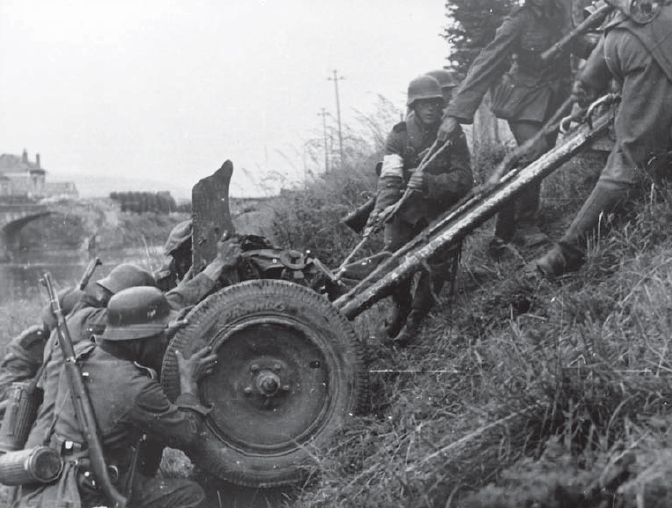
The battlefield mobility of the 3.7cm PaK was a primary selling point for the German Army, which wanted an antitank weapon that could be used to support river crossings and fighting in broken terrain. The 3.7cm PaK was designed with German maneuver doctrine not likely opposition in mind. (Ian Barter)
Thus, the groundwork for the eventual duel between German antitank units and Soviet heavy tanks was laid on the odd dynamic that the Germans needed Soviet ranges to test their newest antitank guns, while the Soviets needed German engineering expertise to build their heavy tanks. Both sides were using each other in the hope of improving their own weapon systems. Up to 1933, both sides were well aware of each others technological capabilities; Rheinmetall even sold 3.7cm PaK L/45 antitank guns to the Soviets, while German engineers participated in designing the first generation of Soviet heavy tanks. However, once Adolf Hitler came to power and pushed Germany on a path toward eventual war with the Soviet Union, the period of technological cooperation ceased and both the Wehrmacht and Red Army began preparations for an eventual showdown. German arrogance assumed that the Wehrmacht was technologically well ahead of the Red Army and that Soviet engineers were incapable of designing effective tanks without foreign assistance. Yet when war came in June 1941, the German Army received a severe shock in the first two days of the campaign the Red Army had actually succeeded in designing and mass-producing a heavy tank with armor that German antitank guns could not penetrate. The conditions for a classic militarytechnological duel were set on the battlefields of the Soviet Union, as the Wehrmacht desperately tried to improve its antitank capabilities to counter the Soviet KV-series heavy tanks, while the Red Army was equally desperate to use its near-invulnerable KV tanks to spearhead counteroffensives to drive out the hated invaders. It was a duel fought at the tactical level throughout 194143, but it had profound operational-level consequences.

